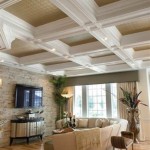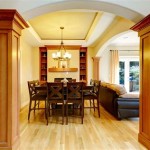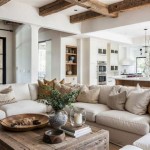How to Decorate Your Home Effectively
Decorating a home involves more than simply acquiring furniture and placing it within available space. It's a process of creating a living environment that reflects personal taste, enhances functionality, and promotes a sense of well-being. Careful planning and execution can transform any space into a comfortable, stylish, and inviting sanctuary. This article offers a comprehensive guide to help navigate the complexities of home decoration, providing a framework for a successful and fulfilling design process.
Establish a Solid Foundation: Planning and Preparation
Before any physical changes occur, a thorough planning phase is crucial. This involves assessing the existing space, determining the intended function of each room, and establishing a realistic budget. Measurement is paramount. Accurately measure all rooms and note the dimensions of architectural elements like windows, doorways, alcoves, and built-in features. This data is essential for selecting appropriately sized furniture and ensuring a balanced layout. Consider the lifestyle and daily routines of the occupants. For instance, a family with young children will have different needs than a single professional. This will dictate furniture choices, storage solutions, and the selection of durable, easy-to-clean materials. Finally, set a realistic budget. This will prevent overspending and help to prioritize purchases, ensuring that the most important items are secured first.
Define the Style and Theme
Choosing a cohesive design style is vital for a harmonious and visually appealing home. Research various interior design styles, such as minimalist, modern, traditional, contemporary, bohemian, or farmhouse. Consider the overall ambiance that is desired. Collect inspiration images from magazines, online platforms, and design blogs to refine your preferences. This exercise helps to determine the colors, textures, and patterns that best resonate with the aesthetic. Remember that the chosen style acts as a guiding principle throughout the decoration process, influencing all subsequent decisions regarding furniture, color palettes, and accessories. A well-defined theme ensures that all elements contribute to a unified and aesthetically pleasing result.
Color Palette Considerations
Color plays a significant role in shaping the mood and atmosphere of a space. A carefully chosen color palette can influence feelings of calm, energy, or creativity. Consider how the color will interact with natural and artificial light. Lighter colors typically make a room appear larger and brighter, while darker colors can create a more intimate and cozy atmosphere. Start with a neutral base, such as off-white, gray, or beige, to provide a backdrop for accent colors. These accents can be introduced through furniture, textiles, artwork, and accessories. Consider the principles of color theory, such as complementary colors (colors opposite each other on the color wheel) and analogous colors (colors adjacent to each other). These principles will guide the creation of visually appealing and balanced color combinations. It is also advisable to test paint samples on the walls before committing to a full paint job. This allows for a realistic assessment of the color’s appearance under existing lighting conditions.
Furniture Selection and Placement
Furniture is the backbone of any interior space, serving both functional and aesthetic purposes. Begin with the essential pieces, such as a sofa, bed, dining table, and chairs. Prioritize comfort and durability when selecting these core items. Consider the scale of each piece relative to the room’s dimensions, avoiding overcrowding or leaving the space feeling sparse. Experiment with different furniture layouts before making any final decisions. Use masking tape on the floor to outline the proposed placement of furniture. This allows visualizing the flow of movement and ensuring adequate space between pieces. Incorporate storage furniture, such as cabinets, shelving units, and ottomans with storage compartments, will maximize functionality and minimize clutter. Consider the traffic flow within each room, ensuring that pathways are clear and unobstructed. Finally, carefully select materials and finishes that complement the chosen design style and reflect the overall mood.
Lighting Strategies and Techniques
Proper lighting is essential for both functionality and ambiance. It can significantly impact the feel of a space, enhancing its beauty and its usability. Layer different types of lighting to create a well-lit and versatile environment. Incorporate ambient lighting, such as recessed lighting or a central pendant light, to provide overall illumination. Add task lighting, such as desk lamps or reading lights, to illuminate specific areas for work or activities. Introduce accent lighting, such as wall sconces, spotlights, or floor lamps, to highlight architectural features, artwork, or decorative objects. Consider the color temperature of the light bulbs, as warmer tones create a cozier atmosphere, while cooler tones are better suited for task-oriented spaces. Utilize dimmers to control the intensity of the light, allowing for mood adjustments depending on the time of day or the occasion. Maximize natural light by keeping windows clear of obstructions and utilizing sheer curtains to filter sunlight.
Textiles, Accessories, and Personal Touches
Textiles, accessories, and personal touches are where personality comes to life, completing the decoration and adding warmth and character. Introduce textiles such as rugs, curtains, cushions, and throws to add texture, color, and pattern. Choose fabrics that complement the overall design style and meet the functionality requirements of each room. Select accessories that reflect the style and interests. This can include artwork, mirrors, decorative objects, and plants. Group accessories together to create visual interest. Incorporate personal touches, such as family photographs, travel souvenirs, or inherited items, to create a sense of history and identity. These elements will transform a house into a home. Be mindful of the overall balance and avoid clutter. Edit the collection of accessories to prevent the space from feeling overwhelming. Regularly refresh the look of the space by swapping out accessories to reflect the changing seasons or personal preferences.
Space Optimization and Functionality
Maximize the efficiency of the available space. This is especially important for smaller homes or apartments. Utilize vertical space by installing shelving units or tall cabinets. Opt for multi-functional furniture, such as sofas with storage or beds with built-in drawers. Employ space-saving techniques such as nesting tables, folding chairs, and wall-mounted desks. Consider the flow of movement within each space, ensuring that furniture placement does not impede access or create bottlenecks. Organize the spaces to minimize clutter and to enhance day-to-day living. Implement efficient storage solutions, such as baskets, drawers, and organizers, to keep items out of sight but still easily accessible. Prioritize functionality when choosing furniture and accessories. Ensure that each item serves a specific purpose and contributes to the overall usability of the space.

How To Decorate Your First Home Without Blowing The Budget

How To Start Decorating A House When You Feel Overwhelmed

How To Decorate So You Feel At Home Cool Rooms Decorating Your Diy

How To Decorate When You Have Zero Budget

How To Decorate Your Home No Overwhelm Making Maanita

How To Decorate So You Feel At Home In My Own Style

5 Must Have Decor Items To Give Your Home A Luxury Touch This Season Hindustan Times

Moving In Here S 8 Simple Tips To Decorate Your Home Flokq Blog

My Winter Decor House By Hoff

60 Easy And Chic Home Decor Ideas To Try From Designers
Related Posts







